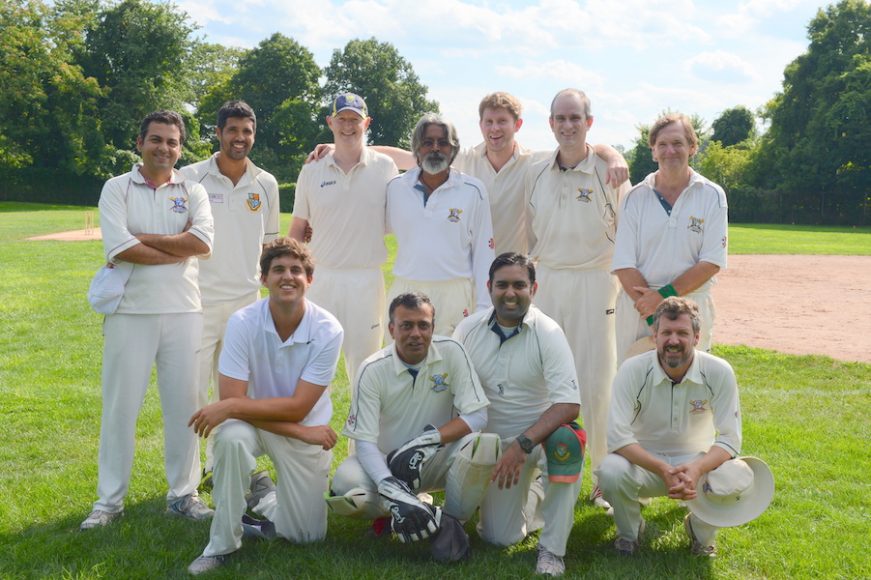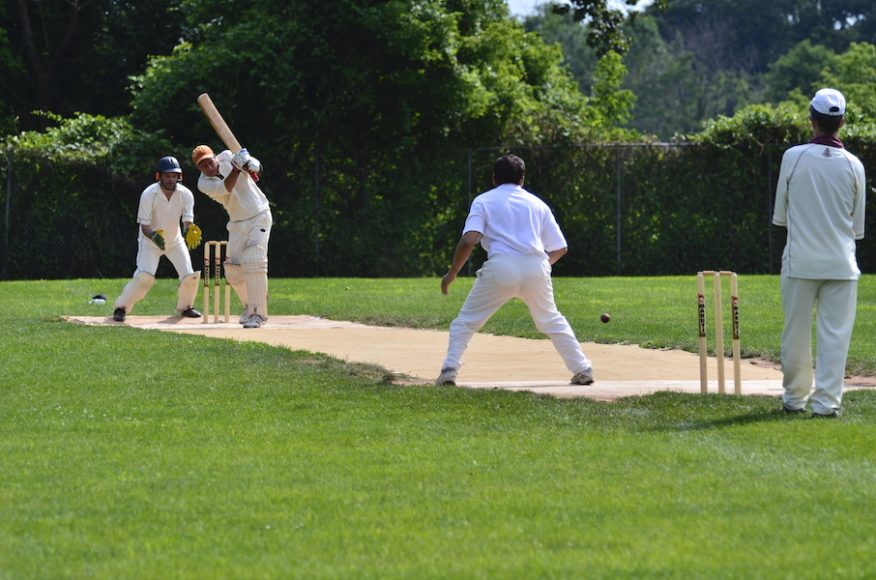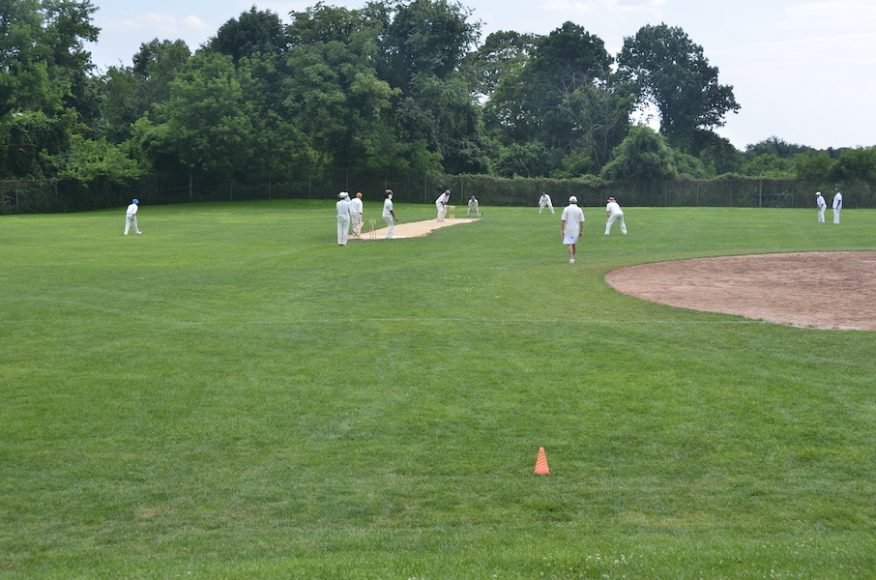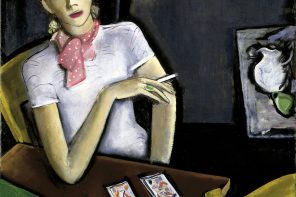First, a confession. I know nothing about cricket, which is sort of disgraceful for an Englishman. OK, that’s not entirely true. I know a smidge. That’s because, in my formative high-school years, too inept to make the school cricket team, I was awarded the dubious honor of being made team scorer instead.
The scorer, as may be self-evident, is the poor sap who keeps the score, still traditionally recorded in pencil in a score book, with correlating cards hung on a scoreboard for all and sundry to see. Keeping the score in cricket is only marginally less convoluted, I am told, than keeping the score in baseball and doubtless just as boring, but being scorer was not without its benefits. These included occasionally missing afternoon school in order to play away matches; traveling across the county to other schools, something which the curious — not to say voyeuristic — teenage me really enjoyed; and, last but not least, indulging in the traditional, slap-up, mid-match afternoon tea. (See “cricket tea” in the accompanying glossary.)
The rules of cricket are notoriously complicated, designed to confusticate the uninitiated. They’re best summed up in a novelty tea towel that appeared sometime in the 1970s and still rears its absurd head from time to time on eBay:
“You have two sides, one out and one in. Each man that’s in the side that’s in goes out, and when he’s out he comes in and the next man goes in until he’s out. When they are all out, the side that’s out comes in and the side that’s been in goes out and tries to get those coming in, out. Sometimes you get men still in and not out. There are two men called umpires, who stay out all the time and they decide when the men who are in are out.”
But just when you’re reminding yourself how completely mad the British are — and I do not necessarily disagree — let me remind you that, in the 18th century, cricket was a popular game in America, and remained so until the time of the Civil War. A match between Londoners and New Yorkers was recorded as early as 1751 and the first international game of any sport, at least as we understand that term today, was a cricket match played between the United States and Canada in 1844. In the 19th and early 20th century, Philadelphia was the unofficial cricket capital of America.
Some of these facts are relayed to me by Sanjay Santhanam, president of Mad Dogs Cricket Club. The Mad Dogs’ home base is Christiano Field in Greenwich and they also play in Norwalk and at Van Cortlandt Park in the Bronx. Founded by a bunch of British expats and now in its 30th year, the club has moved from being an “English” club to something of a melting pot of the cricket-playing world, with members from a long list of countries, including many of the West Indies, Australia, New Zealand, Nigeria, India, Pakistan, Japan — and, of course, Britain. And while cricket clubs proliferate on the East and West Coasts — reflecting a resurgent interest in the sport among the wider population — Mad Dogs has been a particularly successful one. “Thirty years ago,” Sanjay says, “we would play four or five games a season, piling into our little bus or truck and head to Philadelphia. Last year we played over 80 games, all over the world.” The club has been to nearly every cricket World Cup and, as members of three different leagues, there is hardly anywhere in the U.S.A. they don’t get to play.
January saw the Mad Dogs in Sarasota, Florida, and in February they were playing in Hawaii (“Nice work if you can get it,” as they say in the old country.) I wonder if the “golf widow” term can apply to cricket team members. But Sanjay says: “The sport is very inclusive. We get the women out to communal events once or twice month, and they see what their husbands or partners are doing.” Without putting words in his mouth, what I think he is trying to say is that there is generally a sense of wholesomeness about the game. This is true. In cricket, there is generally none of the rowdiness or hooliganism that attaches to international soccer — which is not to say that cricketers don’t enjoy their post-game pint, or pints, because they certainly do. It is also an “older” game, because the level of athleticism required makes a cricketing life, amateur as well as professional, possible well past the age of 40. “Mad Dogs,” Sanjay says, “attracts players from all different backgrounds and they run the gamut — professionals with PhDs, laborers, taxi drivers. We hang out and have a lot of fun.” He adds, “and we’re united. We help our members find jobs, we help them and their families if they are sick. It’s like a big, unmanageable family.”
Cricket is also a game of great aesthetic appeal, especially a match played on a typical “village green.” Think of the all-white “kit” of the players; the perfect, green pitch; the smell of linseed oil (used to oil cricket bats); the famous “thwack” of leather on willow (the unique sound made when the leather-clad ball comes into contact with the bat); along with gentle clapping of the spectators, relaxing in deck chairs — or, here in the eastern U.S.A., in Adirondack chairs — at the edge of the cricket pitch. A game of cricket, in short, is summer distilled. And in this peculiar summer we are experiencing, it is also the perfect game for social distancing, with batsmen standing at the opposite ends of the pitch and a “fielding” side which, almost by definition, is spread out to cover as much ground as possible.
Mad Dogs was the first club to shut down all activities at the onset of the pandemic, but it has now been rebooted. All the new protocols are contained in a six-page document and include players having their temperature taken and a questionnaire that players must complete before each game that is now being used a benchmark for the reopening of sports in the tristate region. Anything less — well, it just wouldn’t be cricket, would it?
Glossary of cricket terms:
Ashes: A metaphorical tournament prize referring to the ongoing rivalry between Australia and England, as in, “Who has the Ashes?” (Australia is the current holder.)
Bails: The sticks placed across the three stumps to form a wicket.
Balls: A cricket ball is made of cork and string and covered in leather. Ut is harder and heavier than a baseball.
Box: Nasty pink, vaguely suggestive, plastic thing — what Americans call a “guard.”
Cricket tea: Traditional, “slap-up” tea, served at the mid-point of a cricket match, which might include finger sandwiches, cakes and scones with jam and cream.
Googly: A devious spin bowl that aims to trick the batsman.
Lords: In residential northwest London, home of the Middlesex County Cricket Club and the most famous cricketing venue in the world.
Silly mid-on: A fielding position, just in front of the batsman’s wicket (leg side.)
Silly mid-off: A fielding position, just in front of the batsman’s wicket (opposite side.)
Wicket: The arrangement of three stumps (sticks) with bails across the top, resembling a gate, which the batsman must prevent from being hit in order to stay in the game.
Willow: English willow wood, with its special combination of hardness and “springiness,” traditionally makes the best cricket bats.







